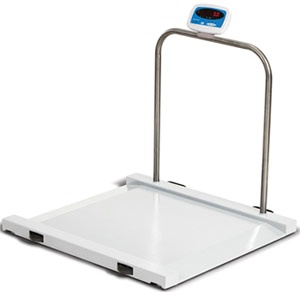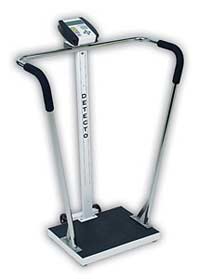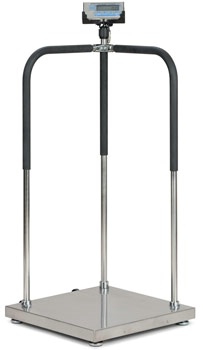Home » Hospital & Durable Medical Equipment » The Importance Of Bariatric Scales » The Importance Of Bariatric Scales
The Importance Of Bariatric Scales

Digital Bariatric Platform Scale
Retail Price: $1,921.99
Your Price: $1,650.00
 Unit: single
Unit: single

Digital Bariatric Platfrom Scale w/ Wheels & Handrails
Retail Price: $2,793.38
Your Price: $2,056.71
 Unit: single
Unit: single

Platform Physician Scale
Retail Price: $1,138.72
Your Price: $985.71
 Unit: single
Unit: single
According to the United States Center for Disease Control and Prevention the rate of obesity among the adult population is at approximately 35.7% or just over one third of all adults. In addition childhood obesity continues to rise with current numbers at about 12.5 million children and teens under the age of 18 meeting the criteria for obesity. Having specific equipment, including bariatric scales or high capacity scales, to deal with this ever increasing trend in patients is important in all practice areas.
Bariatric or high capacity scales can include any design and type. Many used by medical practices are the beam option. This means that there are two different weights, a heavy weight and light weight, which are slid across a beam to determine the patient's weight. These are identical to standard beam models or mechanical options but they can accurately measure higher weights. Many of the models of beam design can handle a capacity of 500 pounds or more. Of course they are also very accurate at weighing smaller individuals, an ideal way to use one scale for all patients.
Digital readouts are popular on these higher capacity scales. Digital readout is much easier for both the patient and the medical staff to use as it immediately records the patient's weight. Different models offer different colors and backgrounds to the LED display which will make a difference in ease of reading depending on the light in the area that the scale will be used. Backlighting of the LED display is a good option to make the numbers really stand out on the display. Bariatric scales that offer the LED digital readout may also provide options for electronic capture or printing of the data onto paper. This is a great way to provide information to the patient or to include it in the chart.
Mobility in scales may be a feature you need to consider. Many of the column style or beam style options have wheels mounted to the frame to allow the scale to be moved. The scale is just tipped back onto the wheels and moved using the handle that is built into the frame. The wheels prevent any jarring of the platform that may cause the scale to become inaccurate over time.
Bariatric scales tend to have different styles of platforms. The platform of the scale is the part of the scale where the individual stands. The heavier capacity models have heavier shock type mechanisms built in that prevent damage to the scale when heavier weights are positioned on the platform. This can be a particularly important consideration when the patients steps up onto the platform. Other high capacity scales may offer the option of a tare. This is ideal for allowing people to weight with their children. The parent steps on the scale and the scale is then set to zero at the parent's weight. When the parent then picks up the child and steps on the scale only the additional weight, which is the weight of the child, is recorded.
Many of the bariatric scales also provide the option of a handrail or handle that is located to the front or sides of the platform. This can provide stability for patients as they step onto and off of the slightly elevated platform. Other models may be designed to have a very low profile on the platform, requiring only a slight step up to be in place.
For some practices and uses a remote display for the bariatric scales may be the best option. This allows the staff to accurately see and record the patient's weight without the patient immediately seeing the results. These models, as well as the on board display options, may also provide additional information besides just the weight. They may be designed to calculate BMI (Body Mass Index) and may also have attached height rods for convenient all in one charting.














